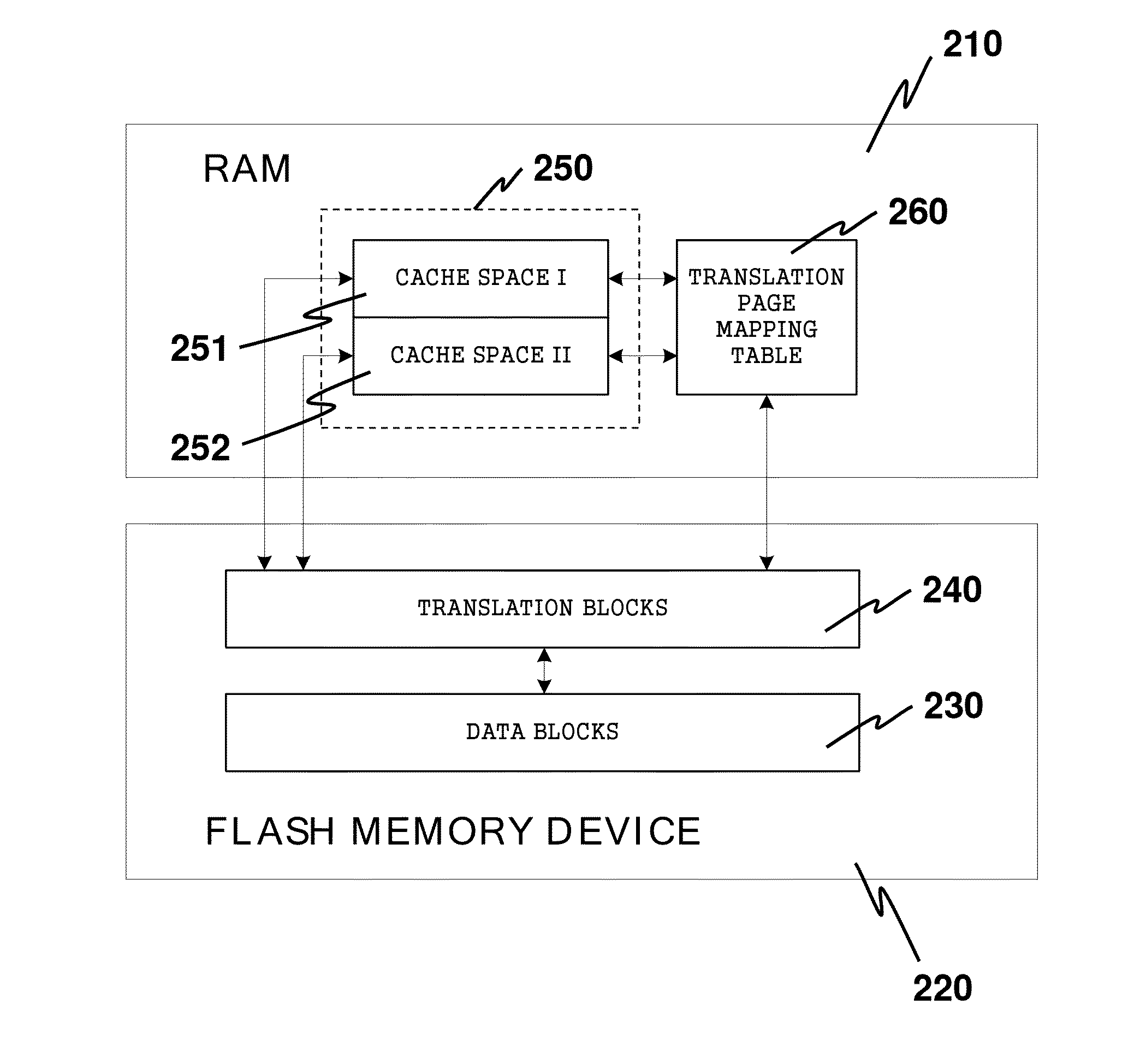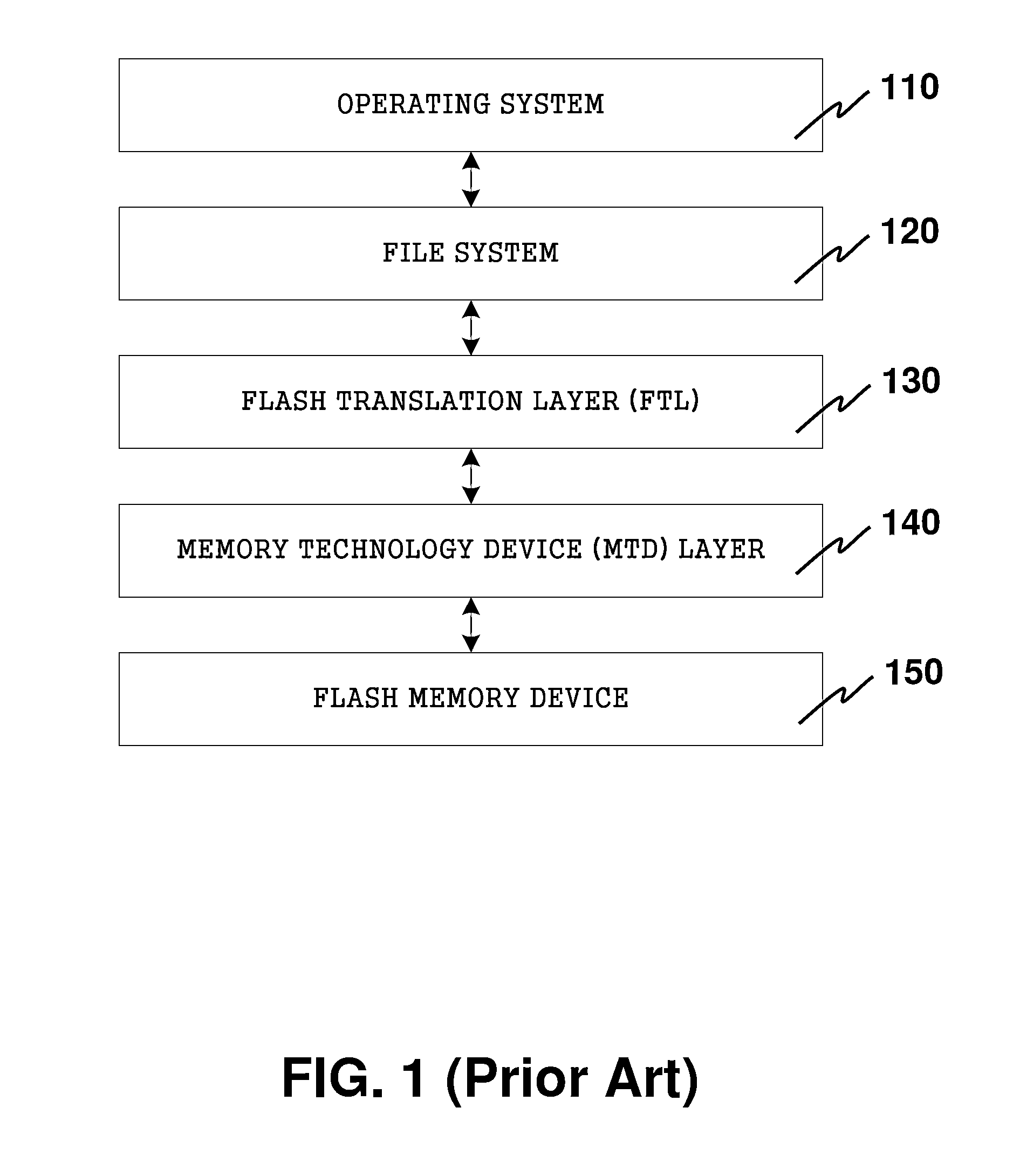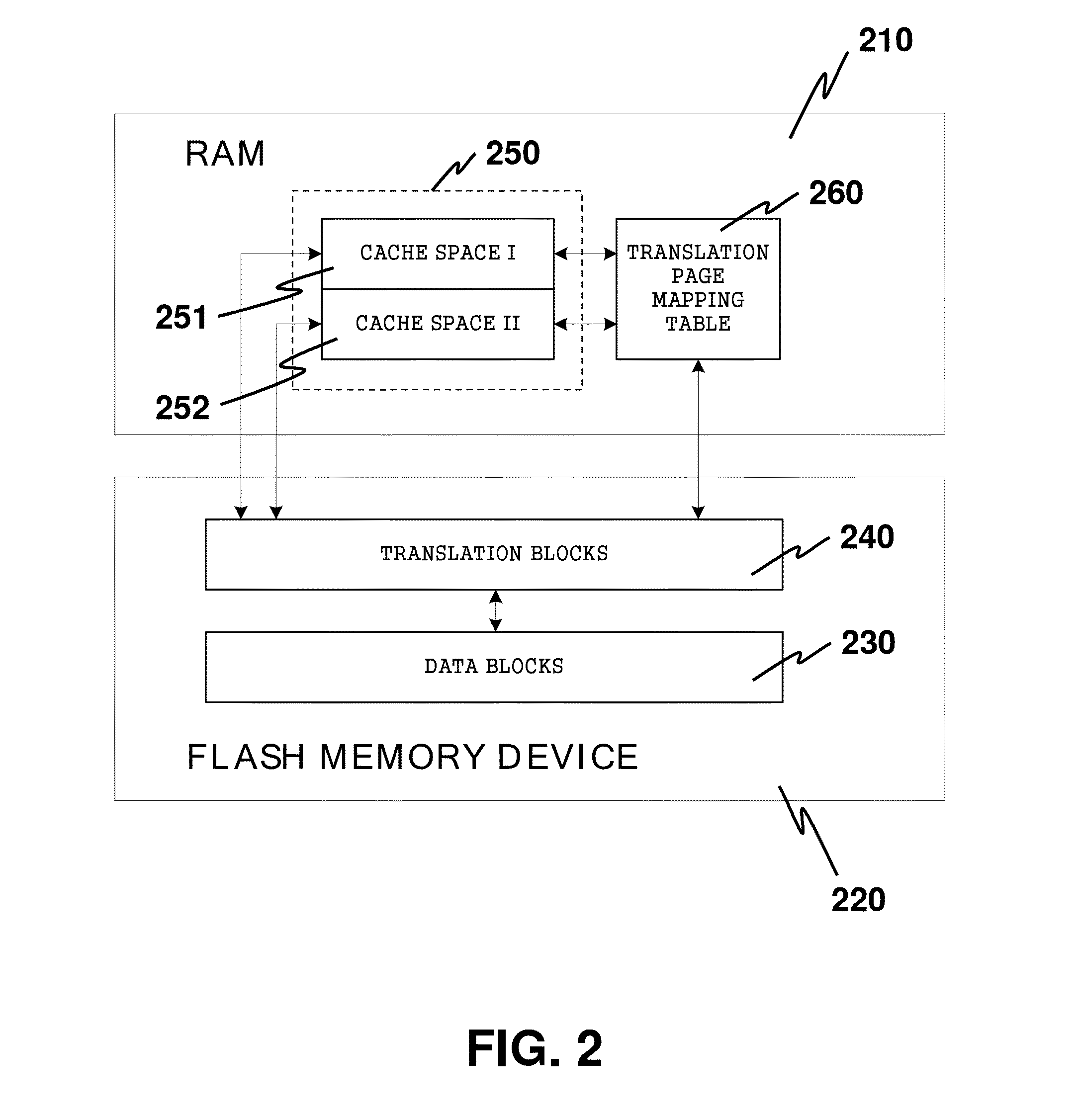Effective Caching for Demand-based Flash Translation Layers in Large-Scale Flash Memory Storage Systems
a technology of large-scale flash memory storage and translation layers, applied in the direction of memory adressing/allocation/relocation, instruments, computing, etc., can solve the problems of increasing the capacity of nand flash memory, increasing the difficulty of page-level mapping tables, and occupying a lot of space in the flash memory for dftl
- Summary
- Abstract
- Description
- Claims
- Application Information
AI Technical Summary
Benefits of technology
Problems solved by technology
Method used
Image
Examples
Embodiment Construction
A. Basic Idea of the Invention
[0036]In Sections C and D below, two address mapping schemes for large-scale NAND flash storage systems are detailed. These two address mapping schemes serve as embodiments of the present invention. For a system with very limited RAM space (e.g., only one or two kilobytes), we disclose an on-demand address mapping scheme that jointly considers both spatial locality and access frequency. For a system with limited RAM space (e.g., less than several megabytes), a demand-based block-level address mapping scheme with a two-level caching mechanism is disclosed for large-scale NAND flash storage systems.
[0037]The basic idea of the invention is to store the block-level address mapping table in specific pages (called translation pages) in the flash memory, while designing caches in RAM for storing on-demand block-level address mappings. Since the entire block-level address mapping table is stored in the flash memory, and only the address mappings demanded are lo...
PUM
 Login to View More
Login to View More Abstract
Description
Claims
Application Information
 Login to View More
Login to View More - R&D
- Intellectual Property
- Life Sciences
- Materials
- Tech Scout
- Unparalleled Data Quality
- Higher Quality Content
- 60% Fewer Hallucinations
Browse by: Latest US Patents, China's latest patents, Technical Efficacy Thesaurus, Application Domain, Technology Topic, Popular Technical Reports.
© 2025 PatSnap. All rights reserved.Legal|Privacy policy|Modern Slavery Act Transparency Statement|Sitemap|About US| Contact US: help@patsnap.com



